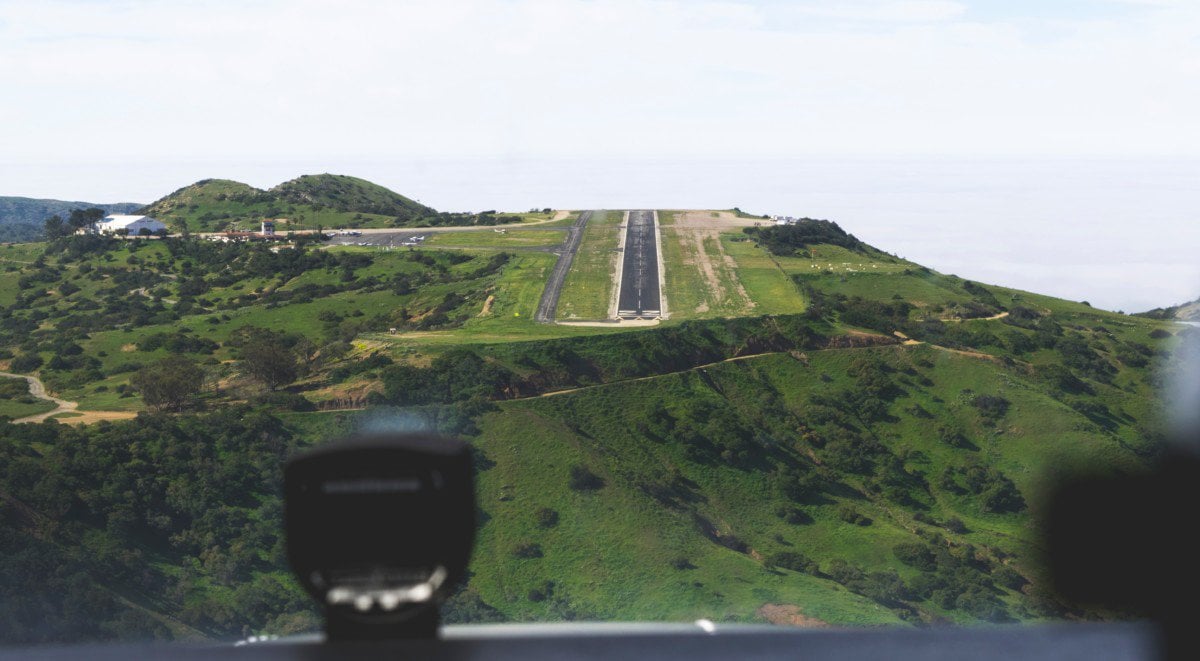When it comes to safe flying, especially for student and new private pilots, one of the most important steps is understanding how to plan for alternate airports. The concept may sound simple at first, but choosing the right alternates involves a mix of regulatory knowledge, weather planning, fuel considerations, and good decision-making. We’re going to guide you through the essentials, helping you build smart preflight habits that could one day save your flight. Or even your life.
What Is an Alternate Airport?
An alternate airport is a backup destination you plan to use in case you cannot land at your intended airport. This might be due to weather changes, unexpected runway closures, or other inflight issues. For IFR pilots, listing an alternate airport on your flight plan is often mandatory. For VFR pilots, while not required, alternate planning is still considered a best practice.
Why It Matters
You might not think you need a backup if the weather looks good and your aircraft is in top condition. But airspace restrictions, mechanical issues, diversions, or rapidly changing weather can all affect your ability to land safely at your planned airport. Having a well-chosen alternate allows you to maintain options, reduce stress, and stay ahead of emergencies.
Legal Requirements for Alternate Airports
IFR Alternate Requirements
According to 14 CFR §91.169, if you’re flying under IFR and the forecast at your destination, one hour before to one hour after your ETA, includes:
- Ceilings less than 2,000 feet, or
- Visibility less than 3 statute miles,
Then you must file an alternate airport.
IFR Alternate Airport Minimums
To qualify as a legal alternate under IFR:
- If the airport has a precision approach, the forecast must show at least 600-foot ceilings and 2 statute miles visibility.
- If it has only a non-precision approach, the forecast must show at least 800-foot ceilings and 2 statute miles visibility.
- If it has no instrument approaches, weather must allow for descent from MEA to landing under VFR.
VFR Considerations
VFR pilots are not legally required to list alternates, but you should always plan for at least one. This includes identifying reachable airports along or near your route that are compatible with your aircraft and conditions.
How to Choose a Good Alternate
When selecting an alternate, consider the following criteria:
1. Distance and Fuel Range
Pick alternates that are within a reasonable flying distance, typically within 30 to 50 nautical miles. Consider how much fuel you’ll have remaining if you divert, and make sure your fuel reserves include enough for the alternate plus FAA-mandated reserves (30 minutes for day VFR, 45 minutes for night VFR).
2. Weather Conditions
Check METARs and TAFs to ensure your alternate has weather conditions that are likely to remain above minimums at your ETA. Avoid alternates that are under the same weather system as your destination.
3. Runway Length and Surface
Your alternate should have runways that accommodate your aircraft’s landing distance requirements. Look at runway surface type (asphalt vs. turf) and lighting availability if you’re flying at night.
4. Approach Options
For IFR pilots, check that your alternate has appropriate instrument approaches. For VFR pilots, make sure the area isn’t prone to fog, rising terrain, or other hazards that might reduce your ability to land safely.
5. Operational Status
Use NOTAMs to verify that the airport is open and has no closed runways or equipment outages. You don’t want to arrive and discover the lighting system or fuel pump is out of service.
6. Airport Facilities
While not always critical, having services such as fuel, maintenance, or a pilot lounge can be very helpful if you get stuck. Some alternates might be technically usable but lack amenities that would make an unexpected overnight stay manageable.
7. Terrain and Obstacles
Review sectional charts or your EFB to make sure there are no major terrain concerns around the airport. This is especially important if weather conditions are marginal or visibility is limited.
Real-World Planning Strategy
Here’s a simple, repeatable method to include alternate planning in every flight:
- List 1–2 alternates near your destination and along your route.
- Review each for:
- Current and forecast weather
- Runway data and fuel availability
- NOTAMs and operational status
- Mentally rehearse the scenario: “If I cannot land at my destination, where do I go and what altitude will I need?”
- Add alternates into your EFB (ForeFlight, Garmin Pilot, etc.) and mark them clearly on your paper or digital navlog.
Common Mistakes to Avoid
- Assuming “nearest airport” is always the best alternate
Nearest doesn’t always mean safest. It may have short runways, be surrounded by terrain, or be in the same weather pattern as your destination. - Ignoring fuel reserves when planning for alternates
You must ensure your fuel endurance accounts for a diversion. That includes climbing, flying to the alternate, and any holding time. - Not checking NOTAMs or weather trends
An alternate is only good if it’s truly available and safe at your ETA.
Examples of Alternate Planning
Let’s look at two scenarios:
Scenario 1: VFR Cross-Country
You’re flying from Fresno Chandler (KFCH) to San Luis Obispo (KSBP). Weather looks great, but you plan Paso Robles (KPRB) and Santa Maria (KSMX) as alternates due to favorable weather and long runways. Both are within 40 NM and outside the coastal marine layer zone.
Scenario 2: IFR Flight from Sacramento (KSAC) to Redding (KRDD)
The TAF at KRDD shows marginal conditions. You check Red Bluff (KRBL), which has better forecast conditions and an RNAV approach. It becomes your listed alternate. You verify fuel will allow a safe flight with 45-minute reserves.
Teaching Yourself to Think Proactively
Planning for alternates builds your overall situational awareness and helps you think like a safer pilot. You’ll naturally start asking better questions:
- “What if I get there and ATC vectors me away?”
- “What if the winds exceed my comfort level on final?”
- “Is there a better place to go nearby that’s more favorable for a landing?”
As your experience grows, this kind of planning becomes second nature. But even on your first few flights, taking the time to plan realistic alternate airports is a huge step toward professional-level decision-making.
Final Thoughts
Even if you’re flying VFR on a clear day, alternate airport planning should always be part of your preflight routine. It’s one of those behind-the-scenes safety layers that helps transform a good pilot into a great one. With the right mindset, tools, and habits, you’ll be better prepared for whatever your flight throws at you.
Recent Posts
FAA MOSAIC Final Rule: What Pilots, Manufacturers, and the Aviation Community Need to Know
Learn how the FAA’s MOSAIC final rule revolutionizes Light-Sport Aircraft certification, expands Sport Pilot privileges, and reshapes general aviation. See what’s changing, when it takes effect,...
Student Pilot Insurance: Essential Coverage for Aspiring Flyers
Discover how student pilot insurance can protect your flying dreams. Get expert tips and coverage options to ensure your safety and peace of mind.


